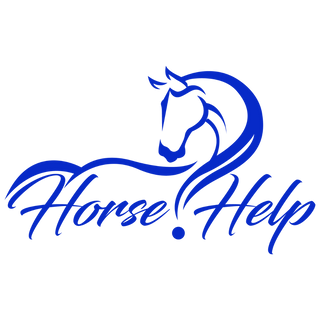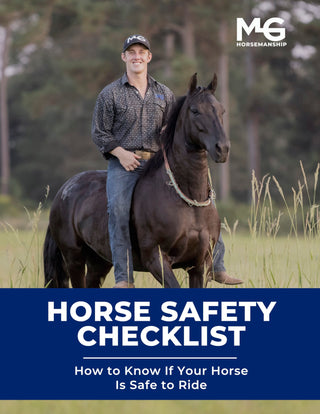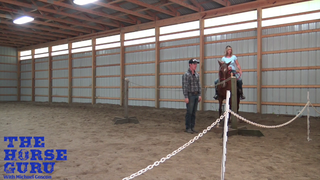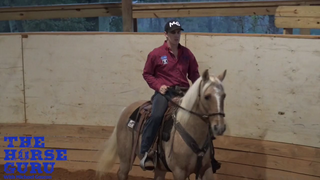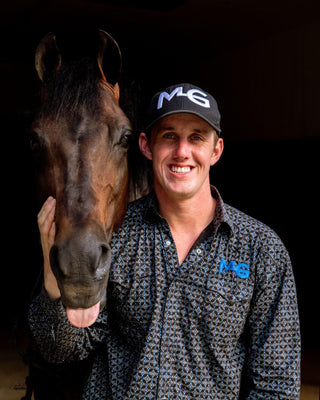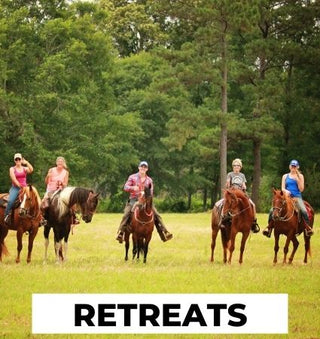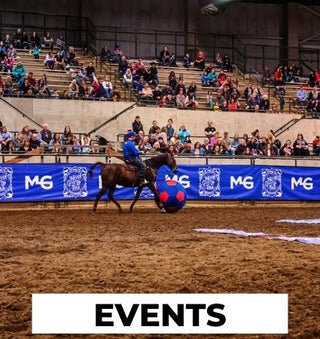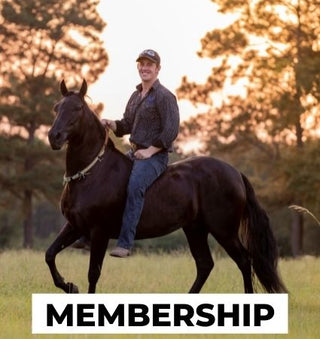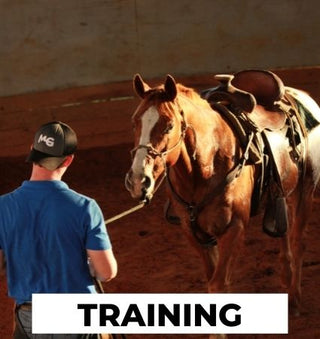Watch the Video Here or continue reading below!
Working with horses often begins long before you ever step into the saddle. In this Pre-School Q & A session, horse trainer Michael Gascon explains how to start horses on the right track by focusing on foundational respect, clear communication, and structured exercises that prepare both horse and rider for success.
This blog breaks down the highlights from the session, including why “pre-school” matters, how to approach it without a round pen, and how to recognize when your horse is truly ready to move forward.
Why Start With Pre-School in Horse Training?
Many riders make the mistake of jumping straight into the saddle to “test” a horse’s behavior. But according to Michael, this often leads to bucking, spooking, or worse.
Instead, the Respect Series—which includes pre-school, kindergarten, and first grade—lays the groundwork. Pre-school is designed to evaluate a horse’s respect level, willingness to move away from pressure, and confidence around obstacles like tarps.
👉 Key takeaway: Pre-school is not about desensitization—it’s about finding the root of behavioral issues like bucking, spooking, or running off and addressing them before they escalate under saddle.
Can You Do Pre-School Without a Round Pen?
One of the most common questions riders ask is whether they can work on pre-school exercises without a round pen.
Michael’s answer: Yes—but you may need to skip straight to kindergarten.
-
Pre-school is best in a round pen or enclosed space where you can safely free-lunge the horse.
-
If you don’t have one, begin with kindergarten exercises like backing, flexing, and yielding the shoulders and hips on a line.
-
Trying to do pre-school with a halter and line often sets the horse (and handler) up for frustration.
👉 Training tip: Horses are honest animals. If they surprise you, it means you didn’t ask the right questions. Pre-school helps you ask those questions safely.
What Counts as Passing Pre-School?
Passing pre-school isn’t about perfection. It’s about respect.
A horse “passes” when:
-
It willingly moves away from you when asked.
-
It crosses simple obstacles (like a tarp) without running you over.
-
It shows more respect for you than for the scary object in front of it.
If a horse refuses and tries to push into your space, run over you, or kick out, that’s valuable information. It tells you exactly what kind of issues may surface later under saddle.
What If My Horse Is Spooky or Blows a Lot?
Many riders worry when their horse snorts, blows, or gets nervous during pre-school. Michael explains:
-
Fear itself isn’t the problem—it’s the reaction to fear that matters.
-
A spooky horse that still does what you ask is passing.
-
Over time, repeated success builds confidence, just like resistance training for soldiers in boot camp.
👉 Pro tip: Don’t wait for the blowing to stop before moving forward. If the horse respects you and performs the task, that’s enough to pass.
Should Horses Cross Calmly or Does Speed Matter?
Some horses surge across obstacles quickly. Others hesitate and need encouragement. Both are okay.
The real danger is the horse that chooses to run you over instead of crossing. That horse is showing a lack of respect, and until that’s corrected, they’ll be unsafe to ride.
Using Tools in Pre-School: Flag Stick or Lunge Whip?
Another common question: What tools should you use in pre-school?
-
Flag stick: Best for driving the horse forward from a safe distance.
-
Lunge whip: Useful for horses that kick out or threaten you, since it keeps you outside their kick zone while still applying pressure.
The goal is not to scare the horse—it’s to test whether they’ll move off your pressure and respect your space.
Do You Always Start Training With Pre-School?
Pre-school is often a one-time test rather than a daily exercise.
-
Use it to evaluate a new horse or one you don’t know well.
-
Once a horse has passed, you’ll spend more time on kindergarten and first grade, repeating those lessons until they are consistent.
-
Pre-school can be revisited if a horse has major setbacks, but most riders won’t need it every day.
How Long Should You Work at Each Grade Level?
Forget the stopwatch. Michael emphasizes working until the horse responds willingly:
-
If the horse resists—keep working.
-
If the horse complies—move on.
-
Training sessions aren’t about minutes; they’re about clarity and respect.
Final Thoughts: Respect Over Friendship
Pre-school training highlights one of the most important lessons in horsemanship: your horse doesn’t need a friend—it needs a leader.
-
A horse that only “follows you” over obstacles is not truly respectful.
-
A horse that moves away from your pressure, crosses obstacles, and listens despite fear is developing trust and respect.
-
Leadership keeps you safe—both on the ground and in the saddle.
👉 Bottom line: Pre-school Q & A shows that success with horses doesn’t start in the saddle. It starts with clear communication, respect, and building confidence one step at a time.
